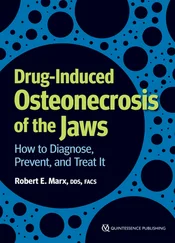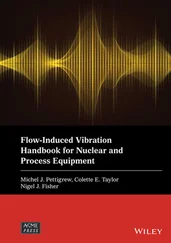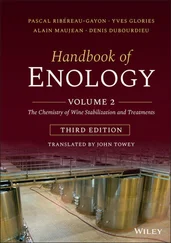and c... Figure 2.10 Molecular structures of chiral Au 3cluster enantiomers
R ‐
41and Figure 2.11 (a) Molecular structures of chiral ligands
R ‐DPM and
S ‐DPM. (b) ... Figure 2.12 Molecular structures of chiral copper cluster enantiomers
R ‐
43a... Figure 2.13 Molecular structures of chiral silole‐based AIEgens
44–
47and co... Figure 2.14 Molecular structures of chiral TPE‐based AIEgens
48–
51and corre... Figure 2.15 Molecular structures of chiral TPE‐based AIEgens
52–
54and corre... Figure 2.16 Molecular structures of triangular macrocycle
55, TPE dual cycle... Figure 2.17 (a) Molecular structure of chiral AIEgen
58. (b) Scanning electr... Figure 2.18 (a) Molecular structures of
R ‐
59and
S ‐
59and schematic illustra... Figure 2.19 Schematic illustration of DNA‐biscyanine hybrid CPL‐active mater... Figure 2.20 Molecular structures of TPE macrocycle diquaternary ammoniums (a... Figure 2.21 (a) Schematic illustration of the co‐assembly processes. (b) Mol... Figure 2.22 Schematic illustration of the co‐assembly of molecules
66and
67 Figure 2.23 (a) Molecular structures of chiral gold complex enantiomers
R ‐
68 Figure 2.24 (a) Molecular structure of chiral TPE‐containing polymer
69and ... Figure 2.25 Molecular structures of AIE‐active chiral conjugated polymers
70 Figure 2.26 Molecular structures of AIE‐active three‐component chiral conjug... Figure 2.27 (a) Molecular structures of AIE‐active chiral conjugated polymer... Figure 2.28 (a) Molecular structure of chiral conjugated polymer
84and corr... Figure 2.29 (a) Molecular structure of
85and corresponding
g lum. (b) Schema... Figure 2.30 Molecular structure of achiral AIEgen
86[66]. Figure 2.31 (a) Molecular structures of
R ‐
87and
S ‐
87. (b) CPL spectra of N*... Figure 2.32 (a) Molecular structures of chiral dopant enantiomers
R ‐
88and
S
3 Chapter 3 Figure 3.1 Strategies for obtaining AIE‐doped polymer films by means of (a) ... Figure 3.2 Working principle of the AIE mechanism: nonplanar fluorophores st... Figure 3.3 Potential energy diagram for generic FMRs and the respective emis... Figure 3.4 Fluorescence spectra ( λ exc= 360 nm) of a 0.01 wt.% of the... Figure 3.5 Evaluation of damage detection in encapsulated AIE polymer coatin... Figure 3.6 Chemical structure of TPE‐4N and fluorescence intensity changes o... Figure 3.7 Fluorescence Φ Fof PS, SBS, and SBR films doped with 0.1 wt.... Figure 3.8 Chemical structure of the TPE‐functionalized PCL polymer and reve... Figure 3.9 DPAP and (a) emission band variations of 0.05 wt.% DPAP/PMMA film... Figure 3.10 Chemical structures of TPE_RED and PMMA_TPE_RED 1.5AIE‐doped pol... Figure 3.11 Working mechanism of an LSC (left) and potential application of ... Figure 3.12 Chemical structure of the PMMA_TPE_RED and photo of the derived ...
4 Chapter 4 Figure 4.1 [Ru(bpy) 3] 2+structure and its cyclic voltammetry in acetonitrile... Figure 4.2 Schematic diagram describing the electron transfer reactions resp... Figure 4.3 Schematic diagram describing the electron transfer reactions resp... Figure 4.4 (a, d) Chemical structures of the investigated complexes; (b) Pho... Figure 4.5 (a) Chemical structure of complex 3; (b)TEM analysis of nanoparti... Figure 4.6 (a) Chemical structures of polymers P1 and P2; (b) CVs (a and b) ... Figure 4.7 (a) TPE molecular structure; (b) ECL‐potential profile for bare G... Figure 4.8 (a) Molecular structure of 1,1‐disubstituted 2,3,4,5‐tetraphenyls... Figure 4.9 (a) Illustration of bivalent cations induced aggregation of NCs w... Figure 4.10 Relationship between I 0and I of AI‐ECL of DPA‐CM NPs (inset) an... Figure 4.11 (a) Illustration of AI‐ECL through self‐assembly; (b) schematic ...
5 Chapter 5Figure 5.1 Molecular packing mode of crystals with different ML properties....Figure 5.2 Proposed mechanisms for ML and photo‐in‐duced RTP processes. (a) ...Figure 5.3 The apparent state and PL images of the different colored doped s...Figure 5.4 The strategy of alkyl chain introduction: after introducing an al...Figure 5.5 (a) Stereogram (up) and cross‐section view (below) of the sandwic...Figure 5.6 Design of the guest/host system. (a) Schematic illustration of th...Figure 5.7 (a) ML spectra of 64in different phases; (b) an image of the cap...Figure 5.8 The new design of the ML material and chemical structure of 83wi...
6 Chapter 6Figure 6.1 Schematic representation of super‐resolution imaging system.Figure 6.2 (a) The fluorescence spectra change along with the 365 nm light i...Figure 6.3 The principle of super‐resolution imaging: (a) schematic of SP an...Figure 6.4 Single molecule/particle fluorescence intensity trajectories SPTS...Figure 6.5 Super‐resolution fluorescence imaging of PSt‐ b ‐PEO block copolyme...Figure 6.6 Optimization of spatial resolution for SPTS super‐resolution fluo...Figure 6.7 Time‐varying super‐resolution fluorescence imaging: (a) super‐res...Figure 6.8 Sequential nanoscale in situ optical visualization for solvent an...
7 Chapter 7Figure 7.1 (a) Chemical structures of ( Z )‐TPE‐UPy and ( E )‐TPE‐Upy. (b) Schem...Figure 7.2 (a) The polymerization process of visible light‐induced RAFT poly...Figure 7.3 (a) Schematic illustration of the working principle of the AIE te...Figure 7.4 (a) Chemical structures of polymer PMT and PVT. (b) Variation of ...Figure 7.5 (a) Synthetic route to polymer TPE‐PEG. (b–h) Real‐time fluoresce...Figure 7.6 Schematic representation of the proposed working mechanisms for t...Figure 7.7 (a) Synthetic route to TPE‐nylon‐6. Fluorescence spectra of (b) T...Figure 7.8 Humidity‐sensitive fluorescent sensors. (a) Schematic illustratio...Figure 7.9 (a) DNA synthesis detection by AIEgens through EdU assay. (b) Det...Figure 7.10 (a) A schematic illustration of the application of TPE‐2N 3for n...Figure 7.11 Strategy for assaying protein folding via access to buried cyste...Figure 7.12 Monitoring of protein fibrillation by AIE‐active TPE‐TPP and com...
8 Chapter 8Figure 8.1 Structures of various micelles and a unilamellar vesicle.Figure 8.2 (a) The molecular structures of TPE–SDS and TPE–DTAB. (b) Plot of...Figure 8.3 (a) Molecular structure of 1and schematic diagram for the format...Figure 8.4 (a) Molecular structure of 2and its self‐assembly. (b) UV/vis sp...Figure 8.5 Molecular structures of compounds 3– 7to demonstrate incorporatin...Figure 8.6 (a) TEM image of 10with a concentration of 0.2 mg/ml. (b) PL spe...Figure 8.7 Molecular structures of amphiphilic block AIE copolymers 9and 10Figure 8.8 (a) Plots of relative intensity ( I 510/ I 450) of HBT‐C 18versus the...Figure 8.9 (a) PL spectra of HBT‐C 18(5 μM) versus SDBS concentration in aqu...Figure 8.10 (A) Chemical structures of compounds 12and 13. (B) Confocal las...Figure 8.11 Formation of AIE‐M and its FL responding to Cu 2+/S 2−[14]....Figure 8.12 The formation of AIE micelles with PEG‐Azo‐TPE polymer (a) and i...Figure 8.13 (a) Schematic illustration of DOX‐loaded self‐assembly micelle (...Figure 8.14 Time course of DOX release from TPED and cellular uptake of free...Figure 8.15 (a) The ex vivo imaging of the excised organs and tumors at diff...Figure 8.16 CLSM images of cells incubated with TSPG/DNA complexes for four ...Figure 8.17 (a–e) Luciferase expression induced by complexes at various weig...Figure 8.18 (a) FL titrations of 1with increasing Cu 2+in water at room tem...Figure 8.19 FL microscopy images of the TPE–SDS micelles in (a) pure water, ...Figure 8.20 CFM images of different stages of different concentrations of TP...Figure 8.21 Two‐dimensional (2D) FL images of algae interacting with 20 μM T...Figure 8.22 Schematic representation of the visualization of 3D macrodispers...Figure 8.23 (a) Schematic illustration of the preparation of vesicles with a...Figure 8.24 (a) Chemical structures of TPE–bile acid conjugates 14– 18. (b) S...Figure 8.25 (a) Chemical structure of (TCBD) 2‐OPV 3. (b) Chemical structure o...Figure 8.26 (a) Molecular structures of the host molecule WC4P and guest com...Figure 8.27 (a) Structures of TPE–BPA and CTAB. (b) Formation of vesicles wi...Figure 8.28 (a) Molecular structure of TPA‐1. (b) Illustration of the self‐a...Figure 8.29 (a) Illustration of the self‐assembly of TPE–BPA/CTAB vesicles a...Figure 8.30 (a) Molecular structure of TPEI‐C8. (b) TEM image for the vesicl...Figure 8.31 (a) Drug release profiles for 2TPA‐1@Zn 2+fluorescent vesicles a...Figure 8.32 (a) The self‐assembly of TPE–BPA@8MChCl system. (b) Enzymatic re...Figure 8.33 (a) Illustration of the self‐assembly of TPE–BPA@8CTAB vesicles,...Figure 8.34 (a) Illustration of the self‐assembly of pillar[5]arene‐based aq...
Читать дальше












